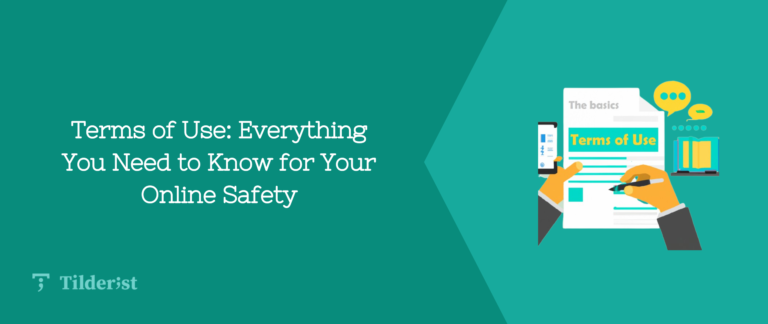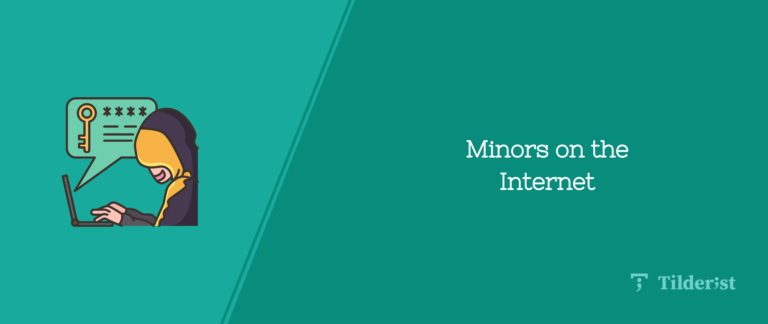When deciding to operate on the Internet, you should know that the company’s liability issues are still present and particularly important.
For the most comprehensive information and to ensure the utmost protection for your company and users, we have compiled the key elements that revolve around the interplay of “company and user responsibility” and “terms of use”.
So let’s start exploring!
What will we see in this post?
- What is legally defined as “liability”?
- What is the relationship between liability and terms of use?
- Limitation of Company Liability – Disclaimer
- User’s Responsibility and Liability
- Conclusions
What is legally defined as “Liability”?
When we use the term ‘Liability‘ in legal science we mean the legal consequences resulting from an unlawful act or conduct committed by one or more persons.
What is the relationship between Liability and Terms of Use?
One of the main reasons we urge you to adopt a Terms of Use policy on your company’s website is that with the latter you define your company’s Liability towards your users, but also the Liability of your users towards you. For more information, check out our Terms of Us article.
Wondering how you could be liable to your users? Are you trying to think of instances where your users will have a responsibility to you?
Let’s look at some examples to understand this.
Let’s assume you have a news website. This website publishes current and relevant topics. However, you also link to a third website, other than your own, to which you refer via a hyperlink, to make the user’s information more complete.
Suppose that on this third website, the user encounters malware, such as Trojan Horse Virus. This is a case where your user could take for granted that you are responsible towards them, as the malicious programs installed on their device were made from a website that you urged them to visit.
If you have clearly stated in the Terms of Use policy that you do not guarantee absolute safe browsing for the user on the website, and the user accepts these terms, you are likely to avoid any legal problems or liabilities related to this issue.
By setting clear expectations and responsibilities in the Terms of Use, users are made aware of the potential risks and limitations, and their acceptance of the terms serves as a form of agreement between both parties.
However, it is crucial to ensure that the terms are written clearly and in compliance with applicable laws to provide adequate protection. If you have not done so, you are legally liable to your user.
Let’s see, now, how the user could have a responsibility towards you.
Suppose you have specified in the policy of the Terms of Use of your website that the user cannot post illegal, abusive or vulgar content. If a user, while staying on your website, hurls insults at a person, then they are liable to you, since they violate a term of your Terms of Use policy, which they have expressly consented to abide by and comply with.
“First rule of business, protect your investment”
Etiquette of the Banker, 1775
Company Limitation of Liability – Disclaimer
By adopting a Terms of Use policy for your company’s website, you can limit your Liability – if any – to your users.
The way this can be achieved is pretty straightforward.
The legal document that will be created will include a separate paragraph explicitly stating that you will not have any responsibility for the cases that you will mention in your legal document. This limitation of liability is also called a disclaimer.
For example, what is stated in a disclaimer is that your company has no liability for any damage, harm, or other negative consequence caused to the user during the use of the website.
In addition, it may be mentioned that it is not involved in issues that may concern disputes between its users and a third website that it refers.
Furthermore, it may not guarantee the smooth operation of the website and its services or the completeness and correctness of the latter. The content of the disclaimer is not the same on all companies’ websites, some are more complete and more detailed, including more cases that disclaim responsibility, and others that mention, restrictively, only specific cases. It is up to each company to choose the issues of limitation of its Liability.
User’s Responsibility and Liability
Any Terms of Use policy must include the User’s Liability to the company.
With the Terms of Use, you can determine what is the appropriate behavior that users should have in order to use your company’s website. For example, it may be specified in the relevant paragraph of the legal document regarding the user’s Liability, what content can be shared, and how they can use the information and services provided.
Simply put, you highlight what users can and cannot do on your company’s website. If the user violates the terms by his behavior or action, they are liable to the company or to the third party who caused damage.
For example, it may be explicitly stated on a company’s website that the reproduction and dissemination of the content of the website to third parties is prohibited. Thus, if the user shares this information, they are liable to the company and you must repair the damage.
If you want to know more about the content that users can post, head over to our article about User Generated Content.
Conclusions
The Terms of Use policy protects your company from many potential actions you do not want.
By having a Terms of Use policy, you prevent problems and risks that may harm your company and limit the Liability that the user will have towards you if he does not behave appropriately.
Although the Terms of Use policy is not made mandatory by law, it is legally binding and will protect you.
Invest in a good Privacy Policy, it is worth your time and ensures the best operation of your business. If you want to fully understand why a Privacy Policy is useful for your website, check out our article “Why you need a Privacy Policy”.
Author





